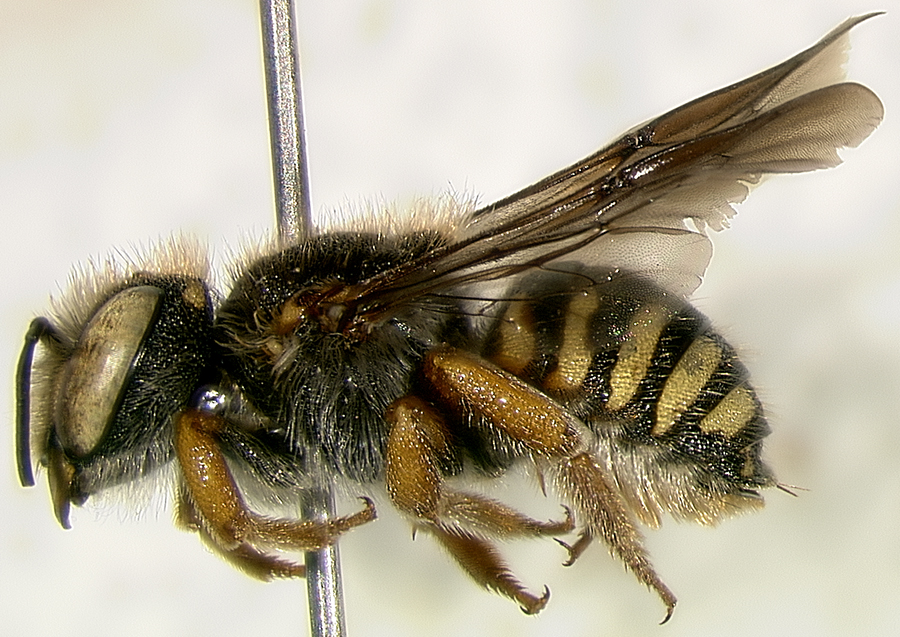Schiefer, T. L. (2022). Reevaluation of the subgeneric classification of the North American species of Prionus Geoffroy (Coleoptera: Cerambycidae: Prioninae: Prionini), with a revision of the subgenus Neopolyarthron Semenov and notes on Prionus (Antennalia) fissicornis Haldeman and Prionus (Prionus) californicus Motschulsk. Transactions of the American Entomological Society 148(3): 335–504.
Abstract reads: The classification of North American species of Prionus (Prionus) Geoffroy, sensu lato, is reevaluated based on male antennal morphology, with three subgenera being recognized: P. (Prionus), consisting of P. aztecus Casey, P. californicus Motschulsky, P. evoluticornis Komiya & Nogueira, P. flohri Bates, P. heroicus Semenov, P. howdeni Chemsak, P. laticollis (Drury), P. lecontei Lameere, P. mexicanus Bates, P. pocularis Dalman, and P. poultoni Lameere; P. (Antennalia) Casey, revived status, consisting of P. fissicornis Haldeman; and P. (Neopolyarthron) Semenov, revived status. The species of P. (Neopolyarthron) are revised and consist of P. imbricornis (Linnaeus), P. debilis Casey, revived status, and P. cuneatus Casey, revived status, with the latter two species being removed from synonymy with P. imbricornis. Prionus robustus Casey, new synonymy, is transferred from synonymy with P. imbricornis to synonymy with P. cuneatus. Prionus fissicornis parviceps Casey, revised synonymy, is removed from synonymy with P. imbricornis and returned to synonymy with P. fissicornis. A lectotype is designated for Cerambyx imbricornis Linnaeus. Keys to North American subgenera of Prionus and to species of P. (Neopolyarthron) are provided. The species of P. (Neopolyarthron) are redescribed, diagnosed, and illustrated, with the female of P. debilis being illustrated for the first time. A county-level distribution map is provided for each species of P. (Neopolyarthron) along with a detailed discussion of distribution, host records, habitat, and conservation status. Prionus imbricornis is associated with forested habitats, P. debilis is associated with tallgrass prairies, and P. cuneatus is associated with prairies and other grasslands. Prionus fissicornis is diagnosed from species of P. (Neopolyarthron), and the type specimens of P. (Antennalia) fissicornis parviceps Casey, P. (Antennalia) fissicornis transversus Casey, and P. (Antennalia) thoracicus Casey are reviewed and illustrated. The date of publication for P. fissicornis is corrected from 1846 to 1847. The following new state records are provided: for P. imbricornis: Delaware and New Jersey; for P. debilis: Minnesota; and for P. cuneatus: Alabama, Arkansas, Colorado, Florida, Georgia, Illinois, Indiana, Iowa, Kansas, Louisiana, Minnesota, Mississippi, Missouri, Montana, Nebraska, North Dakota, Oklahoma, South Carolina, South Dakota, Tennessee, Texas, Wisconsin, and Wyoming. The following previously published country, state, and provincial records are considered to be in error and are removed from the distribution of the relevant species: for P. imbricornis: Canada (Ontario), Croatia, Dominican Republic, Germany, Haiti, Colorado, Connecticut, Iowa, Massachusetts, Minnesota, Montana, Nebraska, New Hampshire, New Mexico, North Dakota, Rhode Island, South Dakota, and Wisconsin; for P. debilis: Florida, Mississippi, North Carolina, North Dakota, Ohio, South Dakota, and Texas; for P. fissicornis: Ontario, Georgia, Louisiana, North Carolina, Pennsylvania, and South Carolina; and for P. californicus: Arkansas and Georgia.
